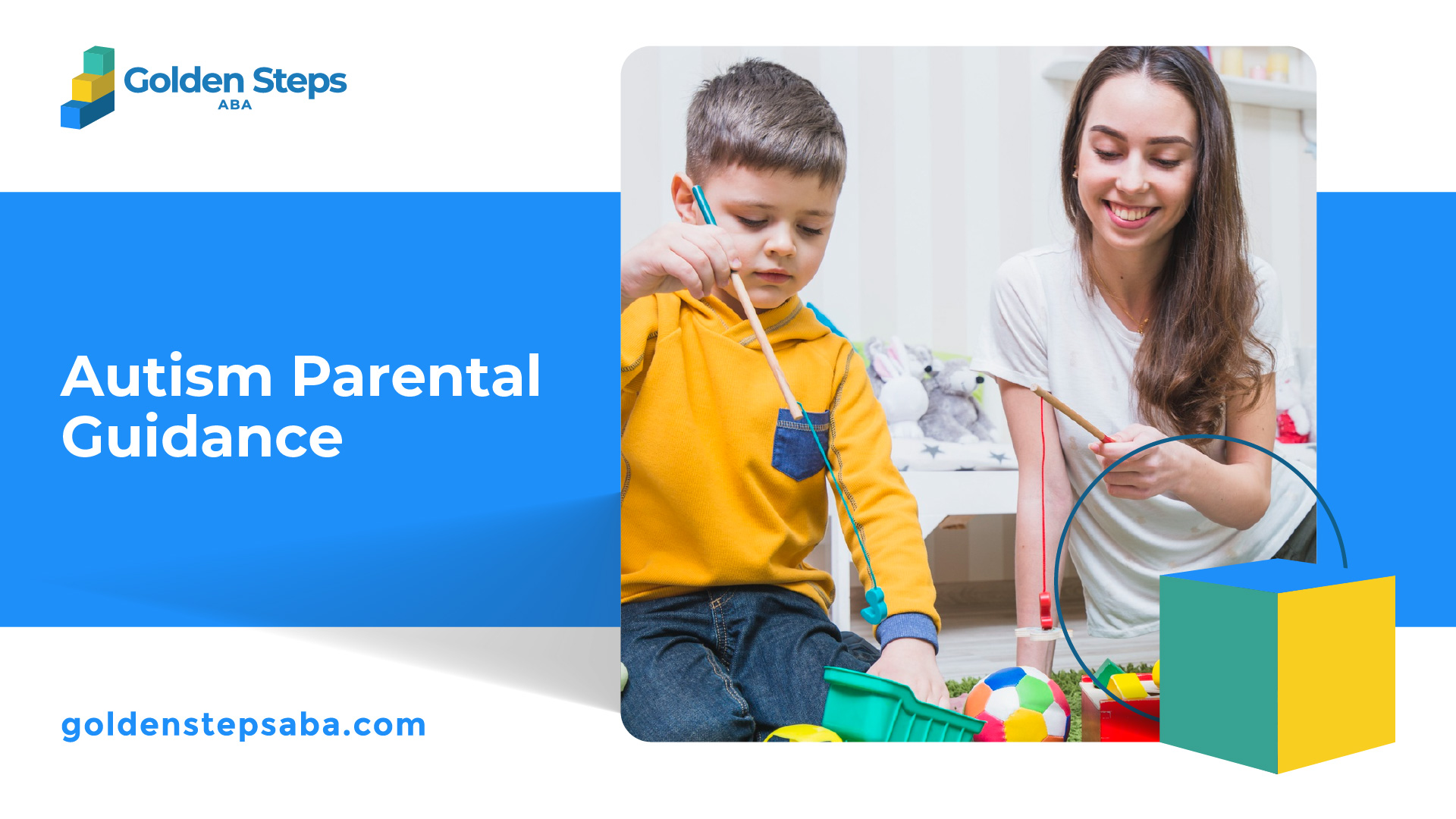Understanding Autism
Autism is a complex neurodevelopmental disorder that affects individuals in unique ways. It is important to recognize that every person with autism is different, with varying abilities and interests. Autism is often referred to as a "spectrum disorder," indicating that it encompasses a wide range of characteristics and challenges that individuals may experience. Understanding the definition of autism and the autism spectrum overview can provide valuable insights into this condition.

Definition of Autism
The definition of autism involves differences in communication, sensory needs, and social interaction. While individuals with autism may face challenges in these areas, it is essential to remember that they also possess their own strengths and abilities. Autism is not a reflection of intelligence or potential. Instead, it is a unique way of experiencing the world.
Autism Spectrum Overview
The autism spectrum is a term used to describe the wide range of characteristics and abilities within the autism community. Each individual on the spectrum is distinct, with their own strengths, challenges, and needs. Some individuals may have milder symptoms and require minimal support, while others may need more comprehensive assistance. The autism spectrum includes individuals with conditions such as Asperger's syndrome, pervasive developmental disorder-not otherwise specified (PDD-NOS), and autistic disorder.
People with autism may experience differences in communication, social interaction, sensory processing, and behavior. While these differences may present challenges, it is crucial to understand that individuals with autism have a full range of feelings and emotions. Supporting them in expressing their emotions, listening to their body language, and utilizing effective communication strategies can make a substantial difference in their well-being.
It is important to dispel common misconceptions about autism. Parenting style does not cause autism, and there is no single known cause for this condition. Additionally, there is no scientific evidence supporting a link between childhood vaccinations and autism. Extensive studies have found no evidence to support this claim. As such, it is crucial to rely on accurate information and scientific research when discussing autism.
While there is currently no known cure for autism, early intervention can make a significant impact on a child's development. Through appropriate support and intervention, individuals with autism can acquire skills necessary for a fulfilling life. It is essential to create a supportive environment that embraces their unique strengths and provides personalized treatment plans to help them thrive.
Understanding autism and the unique characteristics of the autism spectrum is the first step towards providing effective support and guidance for individuals with autism and their families. By embracing an inclusive mindset and promoting awareness, we can empower parents and create a more inclusive society for everyone. For more information and resources on autism, you can explore organizations such as Autism Speaks Family Guide and Autism Parenting Magazine.

Support for Families
When it comes to navigating the challenges of raising a child with autism, parents need all the support they can get. Fortunately, there are resources available to help families on their journey. In this section, we will explore two valuable sources of support: the Autism Speaks Family Guide and the resources provided by Autism Parenting Magazine. We will also address the financial and emotional challenges that parents of children with autism often face.
Autism Speaks Family Guide
The Autism Speaks Family Guide is a comprehensive resource developed to support families and promote a positive future for their child and family. This guide is part of Autism Speaks' series of Family Support Tool Kits, providing valuable information and advice during what can be a challenging time.
The guide offers a step-by-step approach to help parents understand autism, access services, and develop strategies for their child's development and well-being. It covers a wide range of topics, including early intervention, education, healthcare, and communication. Additionally, the guide provides information on legal and financial considerations, as well as tips for navigating the transition into adulthood.
Autism Speaks' dedicated team, known as the Autism Response Team (ART), is available to connect individuals with autism, their families, and caretakers to information, tools, and resources. The guide also includes a list of additional resources and organizations that can offer further support.
Autism Parenting Magazine Resources
Autism Parenting Magazine provides a free resource guide tailored to the needs of parents with autistic children. This guide offers a comprehensive overview of autism resources, providing parents with access to valuable information and support.
The resource guide covers a wide range of topics, including early intervention, therapies, education, and communication strategies. It also provides information on sensory processing, behavior management, and social skills development. The guide aims to empower parents with the knowledge and tools they need to support their child's unique needs and promote their overall well-being.
Financial and Emotional Challenges
Raising a child with autism can bring about financial and emotional challenges for parents. Financial strain may arise from the need for specialized services, therapies, and educational support. Additional expenses, such as transportation, caregiver costs, and adaptive equipment, can also contribute to the financial burden [1]. It's important for parents to be aware of available financial resources and assistance programs to help alleviate some of the financial stress.
In addition to financial challenges, parents of children with autism often face emotional burdens. Caregiving for a child with autism can be a full-time job, leading to increased stress levels and challenges for parents. Feelings of guilt, helplessness, and frustration are not uncommon [2]. It's essential for parents to prioritize self-care and seek emotional support through therapy, support groups, and connecting with other parents who understand their experiences.
By utilizing resources like the Autism Speaks Family Guide and the Autism Parenting Magazine resource guide, parents can access valuable information and support. It's important for parents to know that they are not alone in their journey and that there are resources available to help them navigate the challenges they may face.

Parenting Strategies
When it comes to parenting a child with autism, implementing effective strategies can make a significant difference in their development and overall well-being. In this section, we will discuss three essential parenting strategies: positive reinforcement techniques, individualized support approaches, and building on strengths.
Positive Reinforcement Techniques
Positive reinforcement is a powerful strategy that can help children with autism demonstrate appropriate behaviors in their interactions with others and in handling daily living activities. This technique involves reinforcing a specific behavior by offering a reward or preferred activity immediately after the behavior occurs. By doing so, parents can encourage their child to repeat the desired behavior.
Positive reinforcement can be implemented in various ways, such as verbal praise, tokens, or small rewards. The key is to make the reinforcement meaningful and tailored to the child's preferences and interests. For example, if a child successfully completes a task, such as following instructions or engaging in social interactions, praising their efforts or providing a small reward can reinforce the behavior and motivate them to continue practicing those skills.
Read about: Positive vs. Negative Punishment In ABA Therapy
Individualized Support Approaches
Each child with autism is unique, with individual traits, needs, skills, strengths, and preferences. To support their development effectively, parents should observe and assess these factors to tailor their approach accordingly. By understanding their child's specific challenges and strengths, parents can provide targeted support that aligns with their child's individual requirements.
Individualized support approaches may involve adapting learning materials and environments, modifying communication strategies, and utilizing visual supports. It's essential to work closely with professionals, such as therapists and educators, to develop and implement a personalized approach that maximizes the child's potential.
Building on Strengths
Identifying and building on a child's strengths is crucial for parents of children with autism. Focusing on strengths can help children develop confidence and skills that will benefit them in various aspects of life. By acknowledging and nurturing their talents and interests, parents can empower their child to thrive.
Supporting a child's interests and preferences is important, but parents may also need to gently challenge the child to overcome discomfort or learn new skills. Striking a balance between acceptance and encouraging growth is essential. By creating opportunities for their child to explore and develop their strengths, parents can help them build a strong foundation for future success.
By incorporating positive reinforcement techniques, individualized support approaches, and building on strengths, parents can provide their child with valuable guidance and support in their journey with autism. It's important to remember that every child is unique, so parents should adapt these strategies to suit their child's specific needs. To learn more about supporting children with autism, check out our articles on autism behavior management, autism spectrum disorder support, autism school support, and autism sensory processing.
Common Misconceptions
When it comes to understanding autism, it is important to address and dispel common misconceptions. By providing accurate information, we can promote a better understanding of autism and support individuals and families affected by it. In this section, we will address three common misconceptions: the causes of autism, the vaccination myth, and autism management.
Causes of Autism
It is crucial to note that there is no single known cause for autism. Parenting style does not cause autism, and it is not the result of any specific action or lack thereof by parents. Autism is a complex neurological condition that is present from early childhood and has a genetic basis. The environment can play a role in supporting individuals with autism, but it does not cause the condition itself. It is important to recognize that each person with autism is unique, with different abilities and interests, and supports should be tailored to their individual needs [3].
Vaccination Myth
There is no reliable scientific evidence linking childhood vaccinations to autism. Several large-scale studies have consistently found no evidence to support a link between the measles-mumps-rubella (MMR) immunization and autism. Vaccinations are a crucial public health measure that protects individuals and communities from serious diseases. It is important for parents to consult with medical professionals and rely on credible sources of information when making decisions about vaccinations for their children. The benefits of vaccinations far outweigh any unfounded concerns [3].
Autism Management
Currently, there is no known cure for autism. However, through appropriate intervention and support, individuals with autism can acquire skills necessary for a successful life. Early intervention is particularly important, as it can help children develop the skills needed for a full life. With the right support, people with autism can lead happy and productive lives, making meaningful contributions to society. It is essential to focus on providing individuals with the necessary tools, therapies, and educational opportunities to help them thrive [3].
By understanding and correcting these common misconceptions, we can foster a more inclusive and supportive environment for individuals with autism. It is important to approach autism with empathy, recognizing that each individual is unique, and to provide the necessary resources and support to help them reach their full potential. For more information on autism behavior management and support, refer to our articles on autism behavior management, autism spectrum disorder support, autism school support, and autism sensory processing.

Challenges Faced by Parents
Raising a child with autism comes with its own set of unique challenges. Parents of children on the autism spectrum often encounter difficulties in various aspects of their lives. In this section, we will explore three common challenges faced by parents: financial strain, caregiver stress, and communication difficulties.
Financial Strain
Parents of children with autism may experience financial strain due to the high cost of treatments and therapies. This strain can result in lifestyle adjustments, career changes, and sacrifices [2]. The expenses associated with raising a child on the spectrum, such as specialized therapies, educational programs, and assistive technology, can add up quickly. For some families, this financial burden may require making difficult choices and prioritizing their child's needs over other expenses.
It is crucial for parents to explore resources and support available to help alleviate the financial strain. Local organizations, government programs, and non-profit foundations may provide financial assistance or grants specifically designed for families with children on the autism spectrum. Seeking guidance from professionals and connecting with support groups can also provide valuable insights into accessing available resources. For more information on support options, refer to our article on autism spectrum disorder support.
Caregiver Stress
Caring for a child with autism can be a full-time job, often requiring constant attention and support. This can lead to significant stress and challenges for parents. Single parents and nuclear families, especially those without support from extended family members, may experience heightened stress levels due to the demands of caring for their children [1].
The responsibilities of caregiving can leave parents with limited time for self-care and personal needs. Balancing the care of their child with work responsibilities, household management, and other family commitments can be overwhelming. It is essential for parents to prioritize their own well-being and seek support when needed. This may include seeking respite care, engaging in self-care activities, and reaching out to support groups or therapists who specialize in providing guidance for parents of children with autism. For additional insights on managing stress, consider our article on autism behavior management.
Communication Difficulties
Communication challenges are a significant issue for children with autism, and parents often bear the brunt of these difficulties. Verbal communication, in particular, can be a source of stress and anxiety when a child is unable to effectively express their needs and wants. This challenge becomes more pronounced when nonverbal communication and cues are not understood [1].
To address communication difficulties, parents can explore various strategies and interventions. This may involve working closely with speech-language pathologists and other professionals who specialize in communication disorders. Implementing visual supports, using augmentative and alternative communication (AAC) systems, and incorporating social stories and visual schedules can assist in improving communication and reducing frustration for both the child and parent. For more information on communication strategies, refer to our article on autism school support.
By understanding and acknowledging the challenges faced by parents of children with autism, we can provide the necessary support and resources to empower these parents in their journey. It is important for parents to seek assistance, practice self-care, and connect with a community that understands and can provide guidance through these challenges.

Thriving with Autism
Autism is a lifelong condition, and while there is currently no known cure, appropriate intervention and support can greatly enhance the lives of individuals on the autism spectrum. Thriving with autism involves a combination of early intervention, creating a supportive environment, and personalized treatment plans.
Early Intervention Importance
Early intervention is crucial in helping children with autism reach their full potential. Seeking help as soon as autism is suspected increases the chances of treatment success. According to the Autism Association of Western Australia, through appropriate early intervention, children can acquire many skills necessary for a successful life. Early intervention programs focus on teaching children the skills needed to navigate daily life and interact with others effectively. These programs can significantly impact a child's development and reduce the symptoms of autism over the lifespan.
Creating a Supportive Environment
Creating a supportive environment at home is essential for the well-being and development of individuals with autism. Providing structure, safety, and consistency helps individuals with autism feel secure and more comfortable in their surroundings. It is important to establish a predictable routine, stick to schedules, and provide clear expectations. This helps individuals with autism understand what to expect and reduces anxiety. Creating a designated "safety zone" at home, where individuals can retreat to when feeling overwhelmed, can also be beneficial.
Additionally, fostering a strong emotional connection is crucial. Connecting with an autistic child may be challenging, but paying attention to nonverbal cues, understanding the motivations behind behaviors, and making time for enjoyable activities can help strengthen the bond. Nonverbal communication, such as using visual supports, can also aid in effective communication and understanding.
Personalized Treatment Plans
There is no one-size-fits-all approach to treating autism. Each individual on the autism spectrum has unique strengths, challenges, and needs. Therefore, creating a personalized treatment plan tailored to the individual is essential. These plans typically involve a combination of therapies, interventions, and educational support tailored to address specific areas of difficulty. The goal is to support individuals in developing skills, managing behaviors, and maximizing their potential.
Treatment plans for autism often include a combination of behavioral therapy, speech and language therapy, occupational therapy, and social skills training. The specific therapies and interventions recommended will depend on the individual's needs and goals. Working closely with a team of professionals, including therapists, educators, and medical professionals, can help ensure that the treatment plan is comprehensive and effective.
By emphasizing early intervention, creating a supportive environment, and developing personalized treatment plans, individuals with autism can thrive and lead fulfilling lives. It is important to remember that each person on the autism spectrum is unique, and support should be tailored to their individual strengths, challenges, and needs. With the right guidance and resources, individuals with autism can achieve their full potential and live happy, productive lives.

